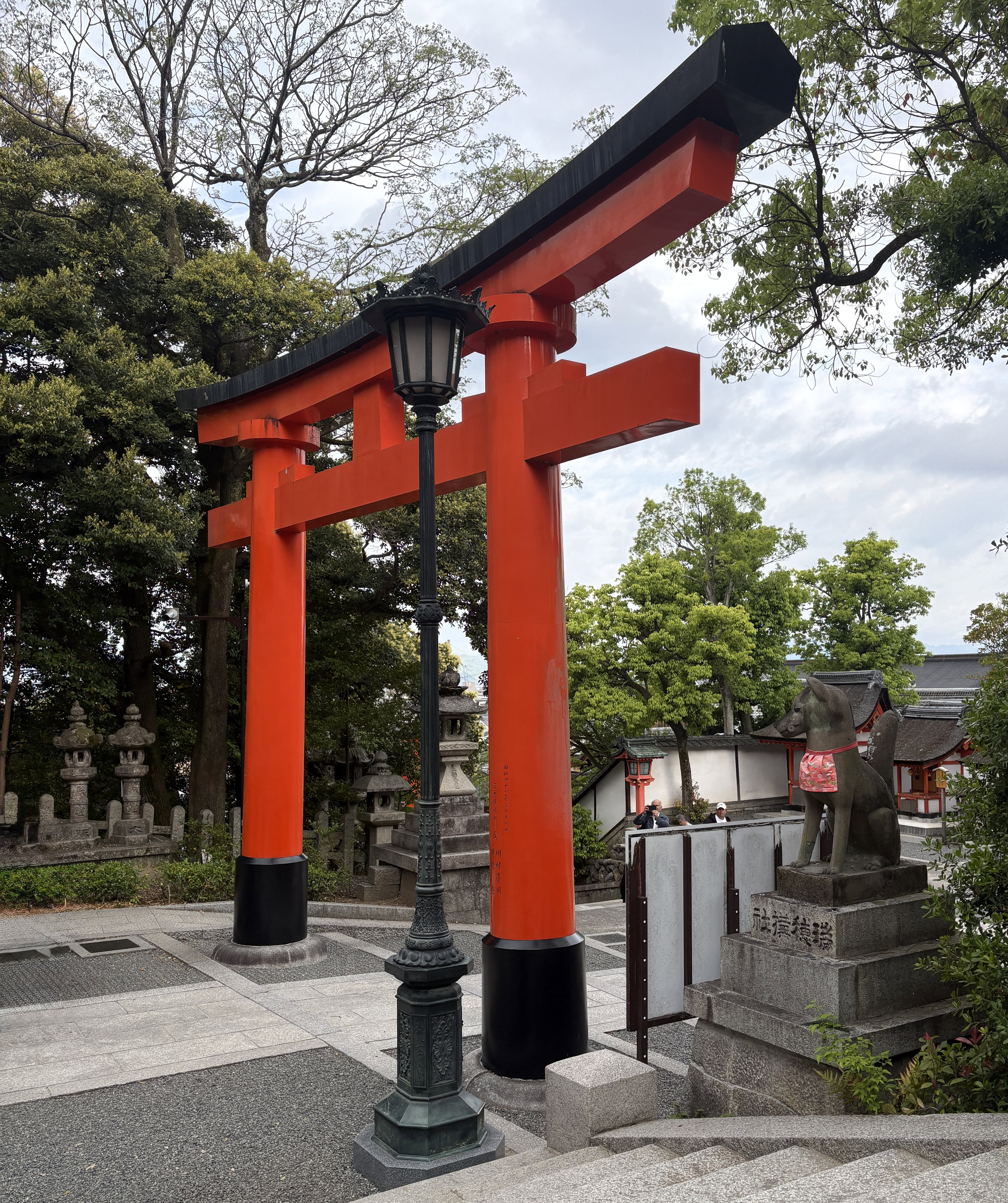3 Days in Kyoto: Ultimate First Timer Itinerary
If you’re planning your first trip to Kyoto, let me make one thing clear: it’s not just temples and quiet gardens. Kyoto is layered.
It’s touristy in ways that Tokyo never is, deeply traditional without being stuck in the past, and still one of the most photogenic, compelling places you’ll ever walk through.
However, your experience of Kyoto depends entirely on where you go and the pace you take.
This 3 days in Kyoto itinerary will give you enough time to hit the cultural highlights, wander through quiet districts, and find those off-the-path moments Kyoto does so well. And yes, you’ll get your temple fix, but without burning out halfway through.
Day 1 in Kyoto: Shrines, Streets & Scenic Views
Kick things off with Kyoto’s most iconic shrine walk before heading to the tranquil riverside town of Uji for matcha and low-key charm.
Then it’s time for a scenic stroll through Gion’s traditional alleyways before ending the day above the rooftops at Kiyomizu-dera, one of Kyoto’s most breathtaking sunset spots. Expect temples, teahouses, and photo-perfect streets from start to finish.
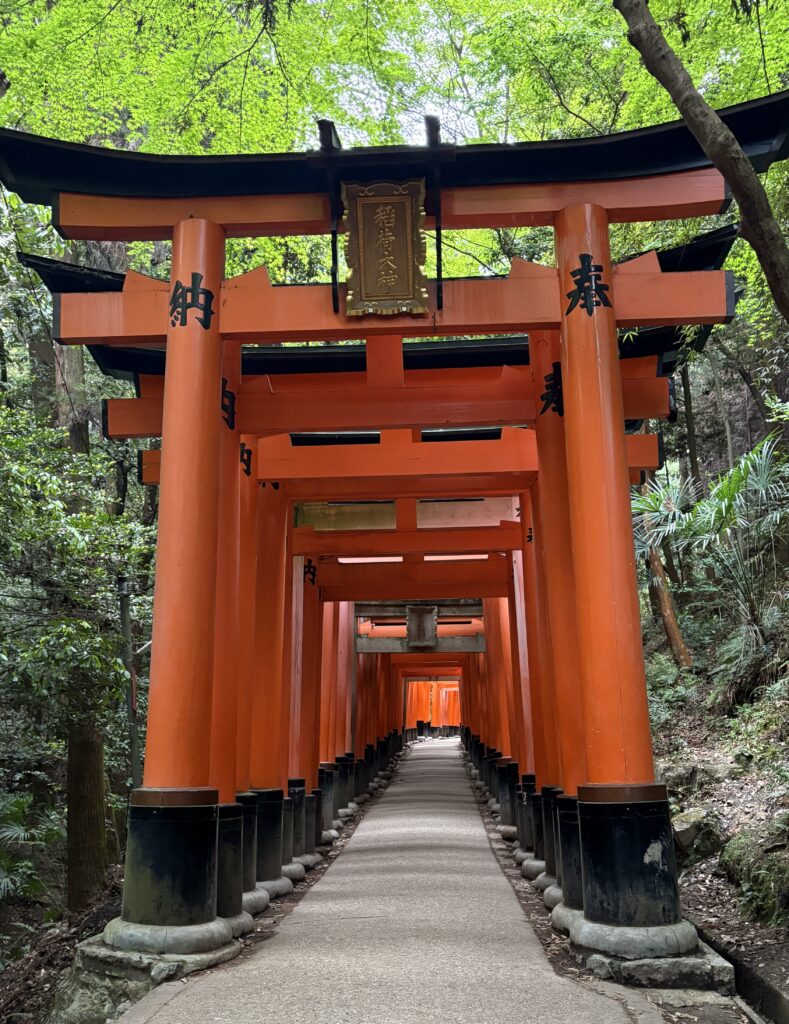
Morning: Fushimi Inari Taisha, Forest Torii Trails, Light Snack Nearby
Start your Kyoto trip at Fushimi Inari Shrine, easily one of Japan’s most photographed spots.
Arrive before 8 AM for a clear shot through the vermilion torii gates; they fill up quickly. But even when it’s busy, the energy here is special.
Follow the trail uphill, and the crowds start to fade. The forest gets quieter, the light softer. You don’t need to go all the way to the top, but walking 20–30 minutes rewards you with peaceful views and that rare Kyoto hush.
Near the entrance, grab a quick snack, such as grilled mochi or inari sushi. Local vendors open early and offer great energy boosters for what’s next.
Afternoon: Matcha in Uji, Riverside Walks, Optional Byodo-in Temple Visit
Take a short train ride to Uji, a small town south of Kyoto known for its world-class green tea. Compared to the busyness of Fushimi Inari, Uji feels calm and open.
Visit Nakamura Tokichi Honten for a matcha dessert set or a tea-making experience where you can whisk your own tea.
There are also plenty of shops selling soba, parfaits, and iced tea. And if you’re a fan of Japanese craftsmanship, Uji is a great place to buy premium matcha powder to take home.
The riverside promenade here is one of the most relaxing in the region. If you have time, swing by Byodo-in Temple, its iconic Phoenix Hall is beautifully reflected in the surrounding pond.
When you’re ready, make your way back to central Kyoto for a complete shift in atmosphere.
Evening: Explore Gion Backstreets, Sannenzaka Slopes, Kiyomizu-dera Sunset
Gion is Kyoto’s most famous geisha district, but it’s also one of the best places to walk and take in the atmosphere. Avoid the crowded main street and turn into the side alleys, that’s where the magic is.
Hanami-koji is still worth a short stroll, but the lantern-lit paths by Shirakawa Canal are quieter and more memorable.
If you’re lucky, you might see a geiko or maiko heading to an engagement, walking quickly in full dress. Be respectful. No photos without permission.
From there, continue to Sannenzaka and Ninenzaka, Kyoto’s most beautiful old streets. The shops here are touristy but undeniably charming, and the sloping walk up to Kiyomizu-dera feels timeless.
Arrive just before sunset to watch the wooden veranda light up in golden hues. The view of the city below and the hills beyond is unforgettable, and if you happen to visit during a seasonal illumination, the nighttime ambiance is truly unreal.
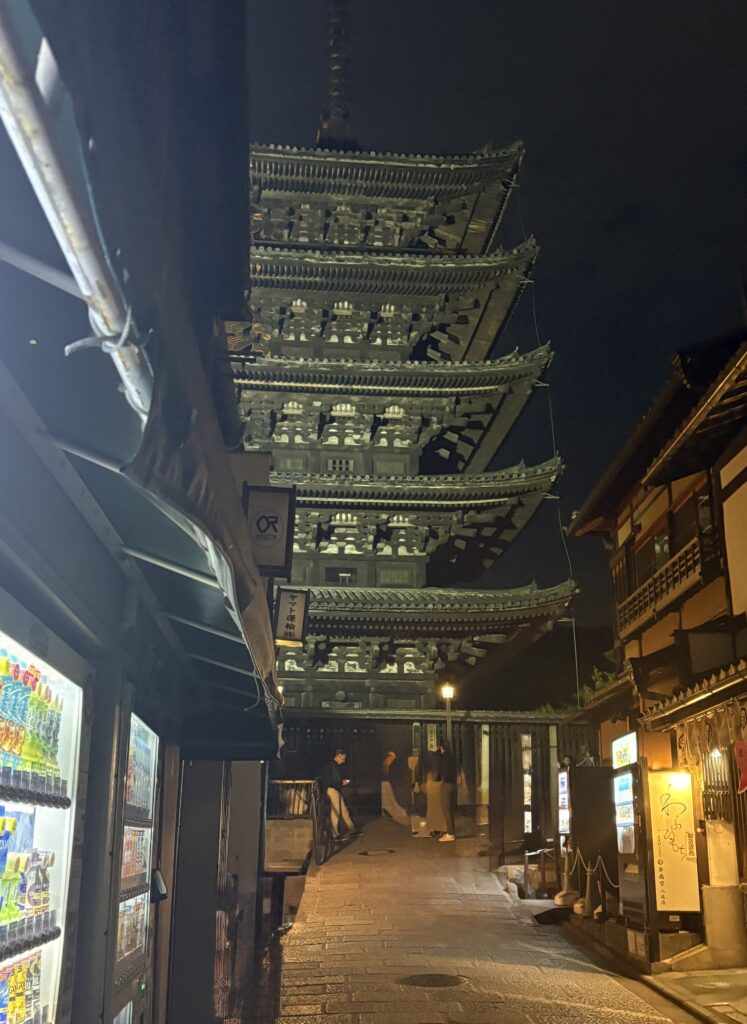
Dinner: Kaiseki or Seasonal Modern Japanese
Wrap up your first full day with a quiet, refined dinner. Whether you want full-on kaiseki or something more modern and creative, this area delivers.
These spots highlight Kyoto’s seasonal ingredients and thoughtful presentation. Book ahead — Kyoto doesn’t do last-minute reservations well.
Day 2 in Kyoto: Bamboo, Markets & Riverside Wandering
You’ll spend most of this day in Arashiyama, one of Kyoto’s most scenic districts.
Although technically still part of the city, it feels like a peaceful countryside escape, filled with bamboo forests, mountain air, and stunning river views.
Morning: Arashiyama Bamboo Grove, Tenryu-ji Temple, Walk to the River
Start early, like really early, if you want to experience the Arashiyama Bamboo Grove without jostling through a crowd.
The sun filters in between the towering stalks, casting soft shadows and making everything feel surreal. You’ll want a few minutes to stand in silence, and early arrival is the only way to get that moment.
From the bamboo path, it’s a short walk to Tenryu-ji Temple, one of Kyoto’s five great Zen temples and a UNESCO World Heritage Site.
The main hall is serene, but it’s the landscaped garden that steals the show. Designed to harmonize with the surrounding mountains, it’s one of the best examples of shakkei (borrowed scenery) you’ll find in Japan.
Once done, take a stroll down to the river. This part of Arashiyama is all about calm, and if the weather plays nice, you’ll find locals and travelers hanging out along the bank or even renting paddle boats. Grab a matcha soft serve or a light snack from a nearby stall while you take it all in.
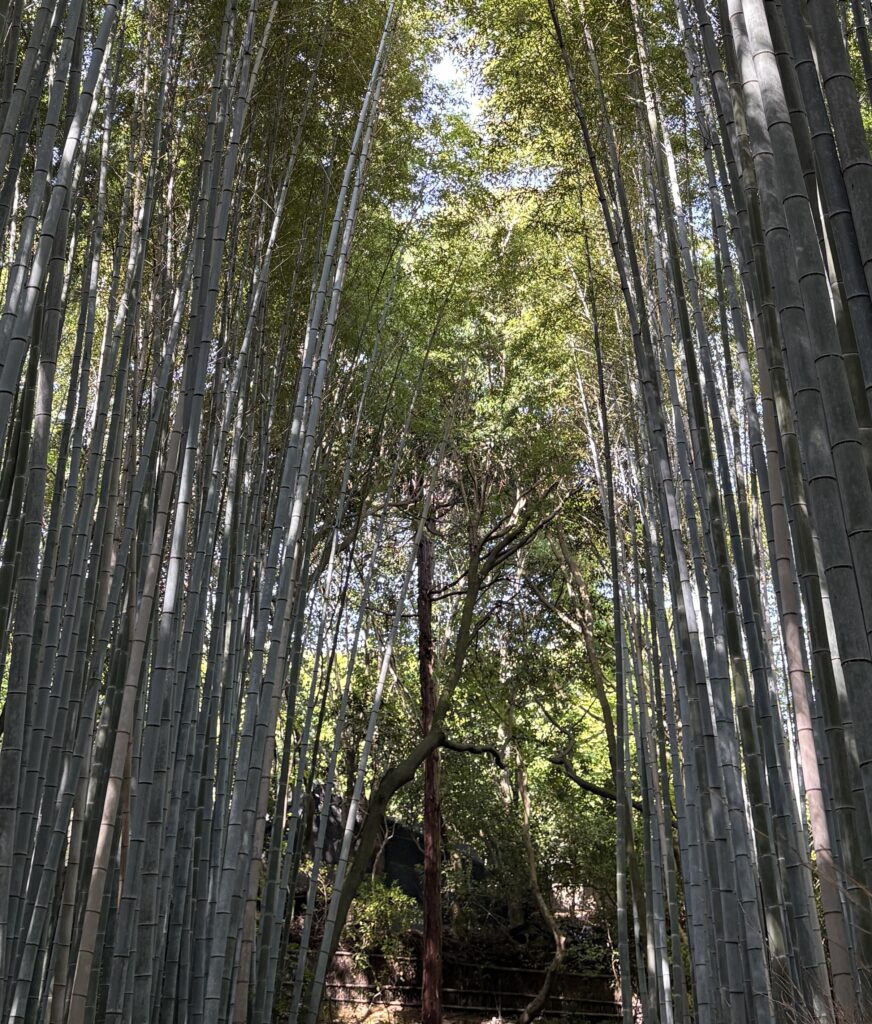
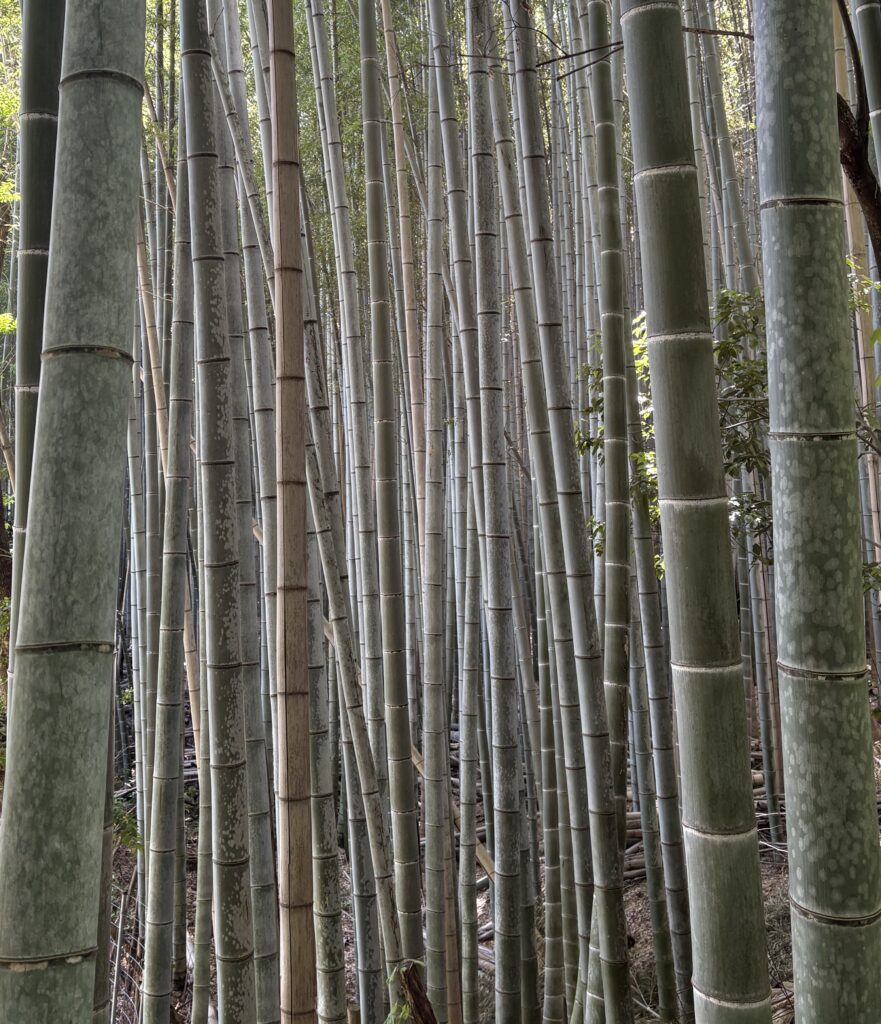
Afternoon: Togetsukyo Bridge, Okochi Sanso Villa, or Monkey Park Iwatayama
Cross the Katsura River via Togetsukyo Bridge. It’s not massive, but it’s scenic, especially with the surrounding trees and hills changing colors by the season.
After that, take your pick. If you’re still in Zen mode, Okochi Sanso Villa is where to go.
The private estate and gardens are pristine, offering numerous shaded spots and panoramic views. You’ll get a small matcha and sweet set with your entrance, making it a peaceful break spot.
Prefer something more active? Monkey Park Iwatayama is across the river and up a forested hill. It’s a bit of a climb, but at the top, you’ll find wild macaques roaming and some of the best views of Kyoto around. Just don’t carry snacks unless you want monkey attention.
Evening: Riverside Sunset, Dinner in Arashiyama
Make your way back toward central Arashiyama in the early evening. If the timing lines up, catch the sunset from the riverside, it’s especially beautiful in spring and autumn.
For dinner, consider staying in the area. Arashiyama doesn’t have flashy nightlife, but that’s kind of the point.
You’ll find plenty of low-key izakayas, soba shops, and set-menu restaurants along the streets. If you missed unagi at lunch, now’s your second chance.
If you’re staying nearby, end your evening with a relaxed walk. If not, it’s a short train or taxi ride back to most central neighborhoods.
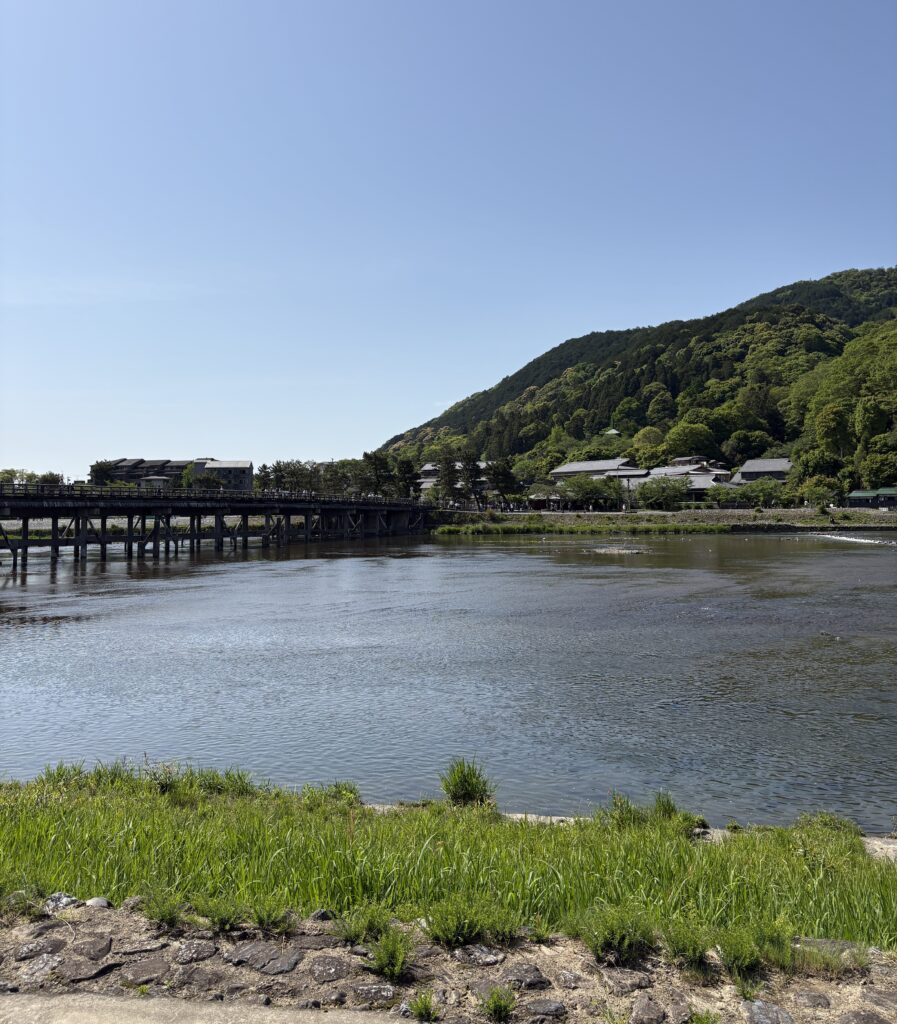
Day 3 in Kyoto: Hidden Corners, Crafts & Temple Sunsets
Your final day in Kyoto is filled with craftsmanship, calm neighborhoods, and more profound cultural discoveries.
This is the slower-paced side of the city, the one where locals live. You’ll explore traditional artisanal crafts, stroll through palace gardens, and conclude with a distinctly Kyoto-style tea ceremony that leaves a lasting impression.
Morning: Nishiki Market, Knife Shopping, Japanese Craftsmanship Stops
Start in central Kyoto with a walk through Nishiki Market, a bustling, covered arcade packed with over 100 vendors selling everything from yuba (tofu skin) and tsukemono (pickled veggies) to skewers of blowtorched seafood and matcha sweets.
The market is crowded, yes, but it’s full of local color. Go early for elbow room and better photos. You’ll find Kyoto’s culinary soul here, and it’s also a great chance to snack on breakfast.
Just a block off the market are some of Kyoto’s best-known knife shops, like Aritsugu, where you can browse (or buy) handmade Japanese knives used by top chefs around the world.
They’ll engrave your name on the blade too, a very cool souvenir if you’re into food or craftsmanship.
Nearby, stop into small artisan boutiques for hand-crafted chopsticks, incense, and ceramics. Kyoto isn’t just about temples; its dedication to traditional craft is unmatched.
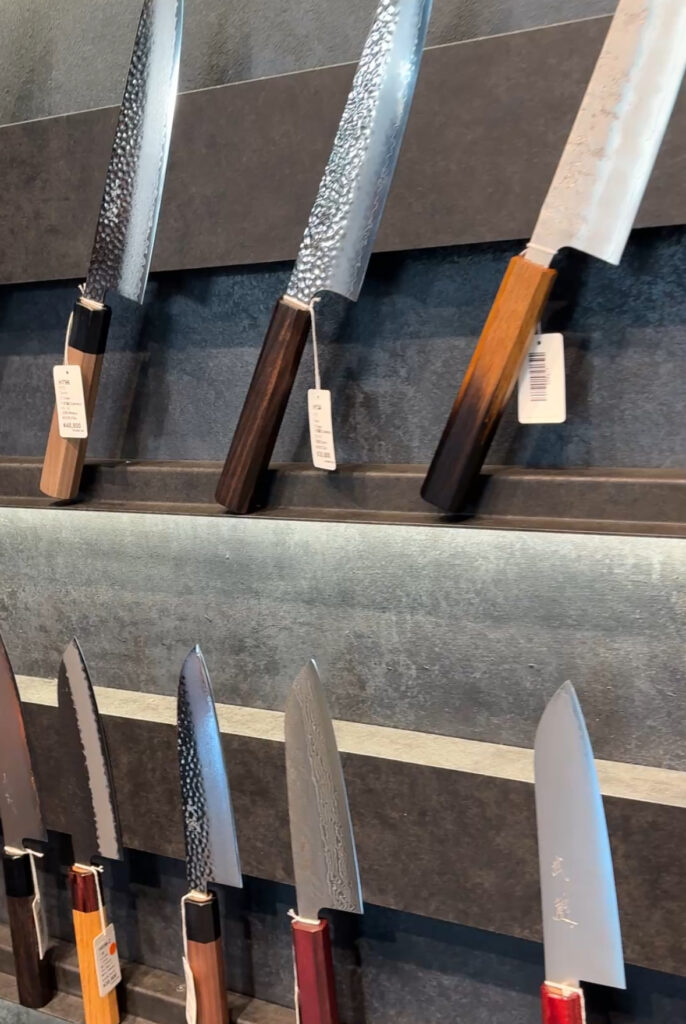
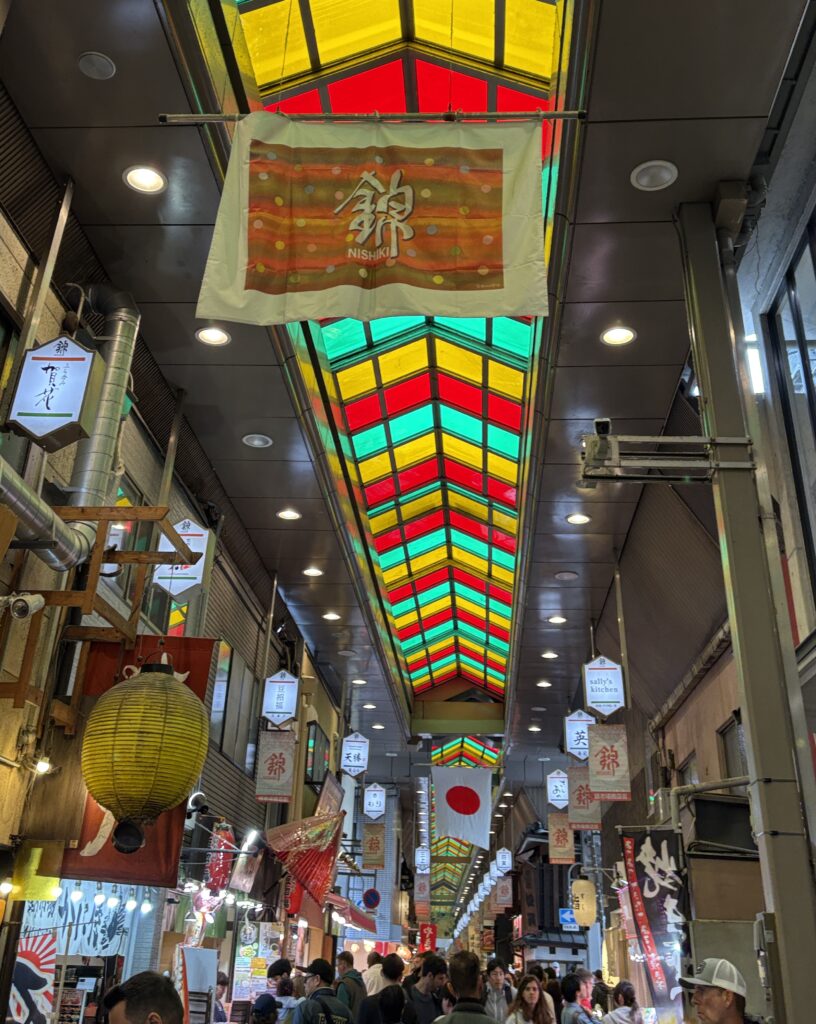
Afternoon: Kyoto Imperial Palace Grounds, Maruyama Park, Matcha & Sweets Break
Next, head to the Kyoto Imperial Palace area, once home to Japan’s emperors, now a massive public park that’s criminally under-visited.
The scale of the grounds is impressive, with long gravel paths, towering trees, and a calm that feels far from the city buzz.
The palace itself can be visited on a free self-guided walk, though the gardens and walls surrounding it are often the highlight. If you’re traveling in spring or autumn, the colors here can be unreal.
After that, make your way to Maruyama Park. On the way, you’ll pass through traditional neighborhoods that show Kyoto’s quieter, more residential side.
Grab a quick lunch nearby, soba, udon, or even a curry spot if you’re feeling bold.
Once in Maruyama, stop for a late afternoon break at one of the nearby tea cafes. eXcafe or Issen Yoshoku offer matcha sets or sweet skewers grilled over charcoal. It’s a perfect pause before your last big Kyoto moment.
Evening: Kyoto-Style Tea Ceremony Experience
End your trip with something calm and immersive, a proper Kyoto tea ceremony. Unlike your average tasting or café experience, this is about slowing down and connecting with a deep-rooted cultural tradition.
Many places offer short-form, foreigner-friendly tea ceremonies led by trained tea masters. You’ll sit on tatami, watch the ritual unfold, and even whisk your own matcha with a bamboo chasen.
The focus is on intention, quiet, and seasonal beauty, the same principles that define so much of Kyoto’s spirit.
A few great options for evening tea ceremonies:
- Camellia Flower Teahouse (central and beginner-friendly)
- Tea Ceremony Koto (Gion area, in a traditional machiya)
Most last around 45–60 minutes and leave you with a souvenir or deep appreciation for just how much thought can go into a single cup of tea.
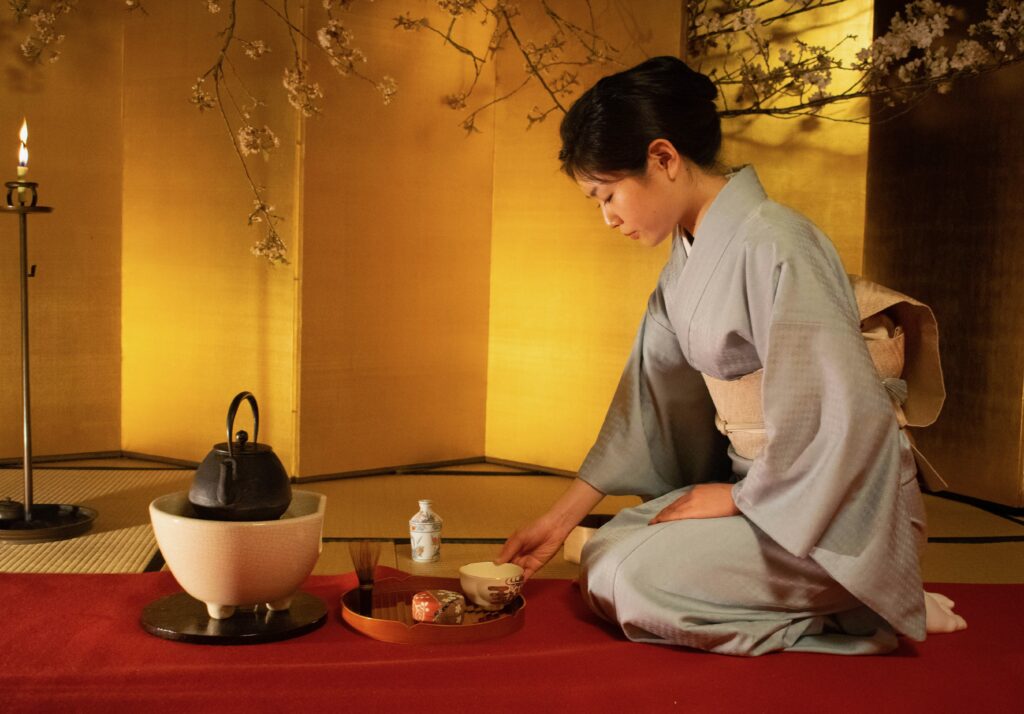
Dinner: Final Meal in Kyoto – Something Casual or Comforting
After the tea, keep your last Kyoto dinner simple. Go casual with an izakaya in Pontocho Alley, revisit a favorite from earlier in your trip, or try one of the city’s more creative modern spots.
You’ve earned it. A relaxed final night with good food, warm lighting, and one last stroll through Kyoto’s peaceful streets is the perfect way to end this three-day itinerary.
If you’re looking for a unique experience and have yet to try beef katsu, I highly recommend Gyukatsu Kyoto Katsugyu, by far the best tableside wagyu grilled katsu I’ve had in Japan. By the way, be prepared to wait 30+ minutes in line.
Optional Day Trips from Kyoto
Kyoto’s central location in the Kansai region makes it an ideal destination for day trips. In under an hour, you can be eating street food in Osaka, hiking in Nara, or temple-hopping in Uji.
If you’ve got an extra day or want to shake things up, here are a few solid options:
- Osaka – Just 30–45 minutes by train and an entirely different vibe. Flashy, loud, food-obsessed, in all the best ways. Perfect if you’re craving takoyaki, neon lights, or just a faster pace for the day. I wrote a full Osaka itinerary if you’d like to extend it.
- Nara – Home to friendly deer (that may headbutt you for snacks), Japan’s largest bronze Buddha, and some truly peaceful parks. It’s slower and more spacious, especially great if Kyoto feels a bit too crowded.
- Uji – Technically part of Kyoto Prefecture, but worth a dedicated half-day. Matcha everything, beautiful riverside walking paths, and the stunning Byodo-in Temple. A great post-Fushimi Inari add-on.
- Hikone or Lake Biwa – For something lesser known, head to Hikone Castle or the shores of Lake Biwa. Quiet towns, castle views, and fresh air — a nice contrast if you’ve been temple hopping all week.
Keep in mind: If your Kyoto itinerary already feels full, don’t force a day trip. But if you’ve got time, these places deliver something different without a long train ride.

Best Neighborhoods to Stay in Kyoto for First‑Timers
Where you stay in Kyoto matters a lot. It can shape whether your trip feels serene and traditional or packed and tourist-heavy.
If it’s your first visit, you’ll want a base that offers charm without chaos, access to public transportation, and a bit of breathing room. Here are the best neighborhoods to consider:
Gion & Higashiyama: Historic streets, lantern-lit alleys, and walking access to top temples and shrines.
- Yuzuya Ryokan — Traditional ryokan just steps from Yasaka Shrine. Pricey, but unforgettable.
- Hotel The Celestine Kyoto Gion — A refined modern stay with just enough local flair. Quiet but close to the action.
Downtown Kyoto (Shijo/Karasuma): Central, well-connected, and a food lover’s paradise.
- Hotel Gracery Kyoto Sanjo — Modern comfort with Nishiki Market and Teramachi shopping arcade just around the corner.
- Good Nature Hotel Kyoto — Sleek, eco-friendly, and home to a gorgeous rooftop bar.
Kyoto Station Area: Surprisingly convenient, especially if you plan to take a day trip or travel across Japan.
- Hotel Granvia Kyoto — Directly inside Kyoto Station. High-end with seamless Shinkansen access.
- Daiwa Roynet Hotel Kyoto Ekimae — Mid-range, super clean, and just steps from the central hub.
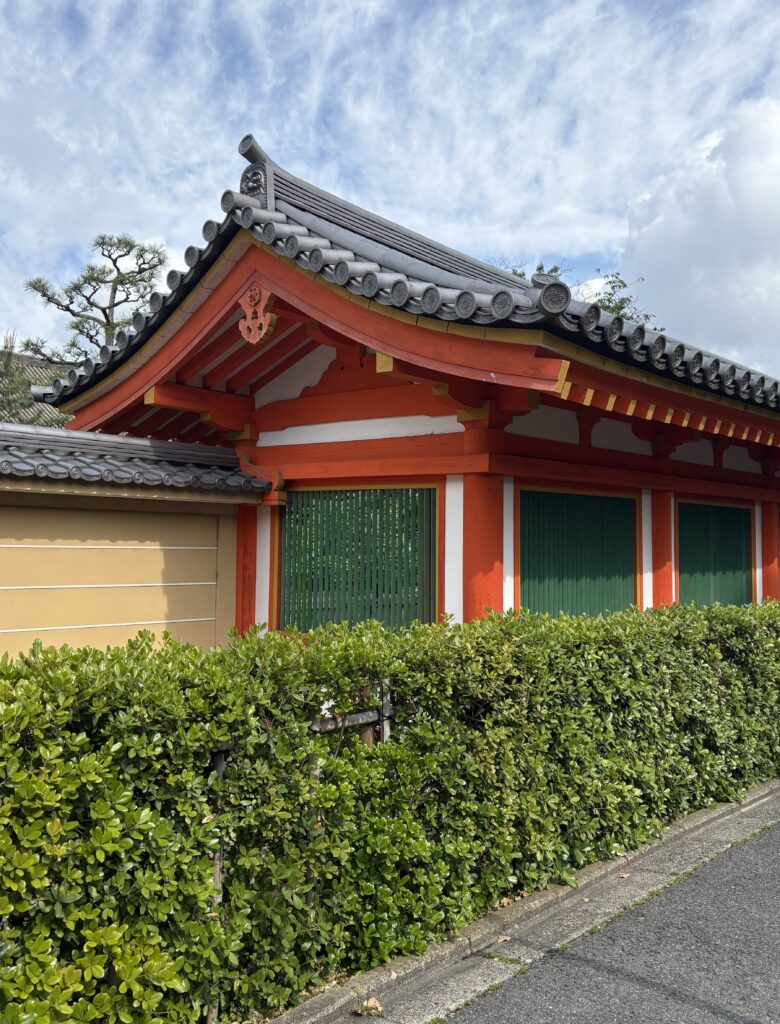
Arashiyama: Green, peaceful, and perfect if you’re here for a slower, more scenic side of Kyoto.
- Suiran, a Luxury Collection Hotel — Riverside luxury with private open-air baths and traditional architecture.
- Homm Stay Nagi Arashiyama — Cozy boutique stay near the bamboo grove with minimalist rooms and easy access to top sights.
Northern Kyoto (Kurama, Demachiyanagi, or around the Imperial Palace): For second-timers or travelers wanting fewer crowds and more nature.
- Kyoto Brighton Hotel — Quiet, classy, and a great choice if you value space and calm.
- Ryokan Nenrinbo — Tucked away in the hills. Feels like a countryside retreat, still within Kyoto city limits.
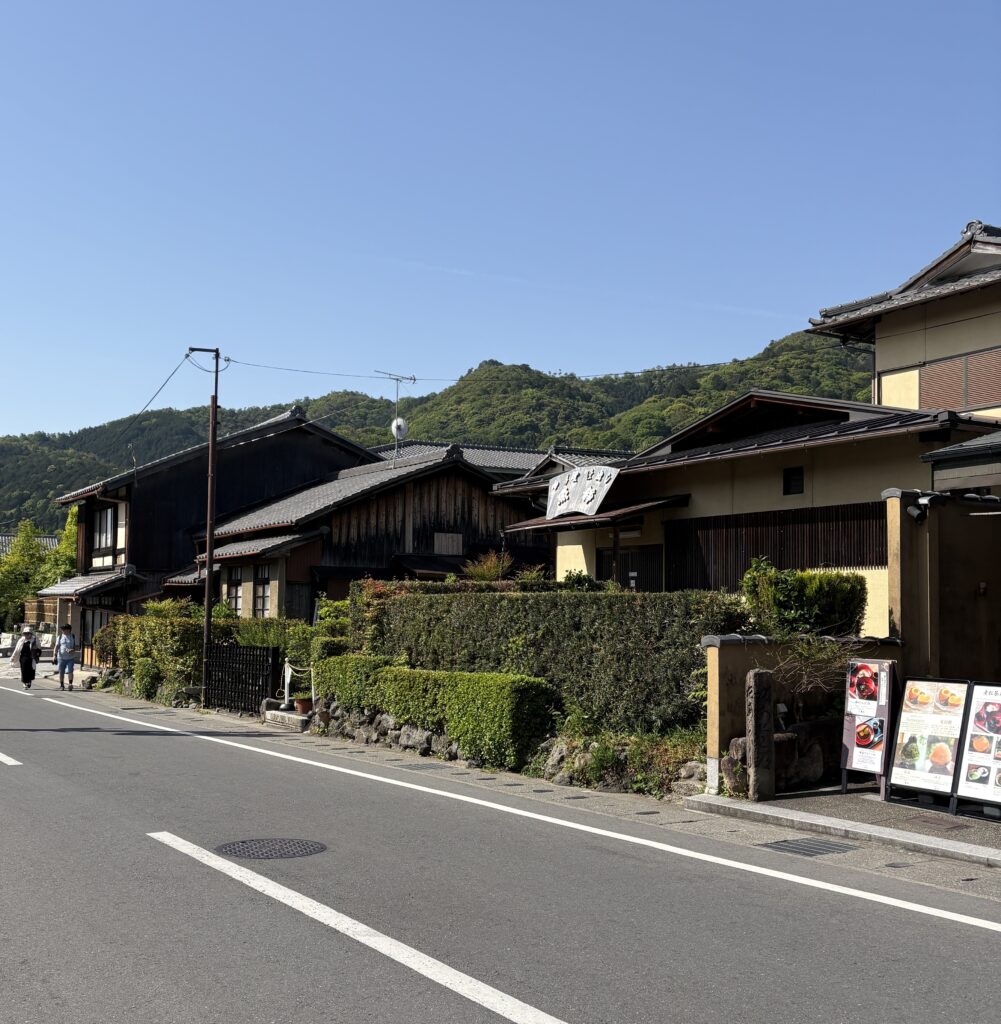
How to Get Around Kyoto
Kyoto’s layout is more straightforward than Tokyo’s but slightly more spread out than Osaka’s. Luckily, the city’s public transportation and walkable districts make it easy to explore with minimal fuss.
Whether you’re temple-hopping or wandering through traditional streets, getting around is refreshingly manageable.
- IC Card (ICOCA/Suica/Pasmo): Grab one at any major station. These prepaid cards work on buses, trains, and subways across Kyoto—and even in Tokyo and Osaka.
- Subway & Trains: Kyoto only has two subway lines, but JR and private rail lines fill in the gaps. Use the JR Nara Line to reach Fushimi Inari or the Keihan Line to get to Uji.
- Buses: Kyoto’s buses provide access to most major temples and attractions, particularly in the northern and western areas. They’re useful but can get crowded during peak hours. Try to avoid them during rush hour.
- Taxis: Readily available and reliable, though pricey. Best used late at night or when traveling to a location that is difficult to access by public transport.
- Walking: Some areas, like Gion, Higashiyama, and Arashiyama, are best explored on foot. Many temples are clustered together, making casual strolls incredibly scenic.
- Bikes: Kyoto is flat and surprisingly bike-friendly. Many hotels offer rentals, and it’s a great way to explore quieter neighborhoods or riverside paths without relying on buses.
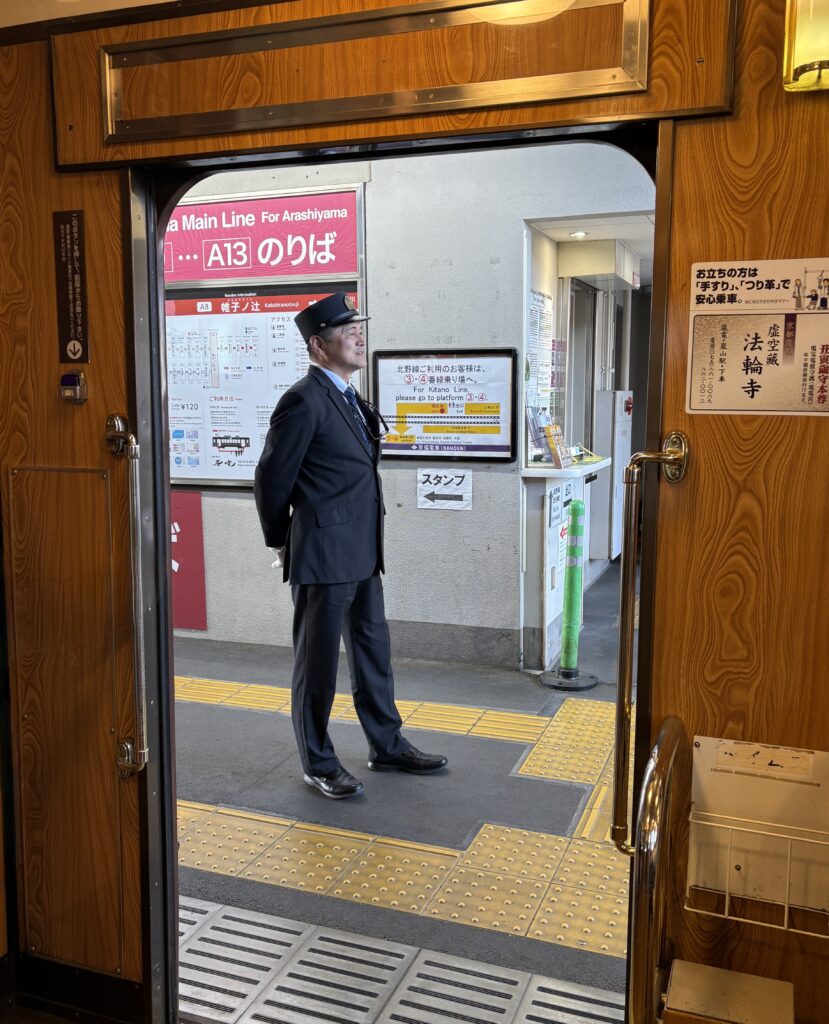
Must‑Try Foods in Kyoto
Kyoto’s food scene isn’t as loud or showy as Osaka’s, but it is refined, seasonal, and steeped in tradition. This is the city that takes subtlety seriously.
Whether it’s a delicate bowl of yudofu or a multi-course kaiseki feast, Kyoto food is about balance, presentation, and a sense of place.
Here are a few things you shouldn’t leave Kyoto without trying:
- Yudofu (Hot Tofu) – This simple tofu dish is often served near temples like Nanzen-ji or Ryoan-ji. It’s simmered in a light broth, eaten with dipping sauce, and somehow comforting in a very Kyoto way.
- Kaiseki – Kyoto’s haute cuisine. Multiple courses, tiny details, seasonal ingredients. It’s not just dinner, it’s a ceremony. Great if you want a full cultural immersion with your meal.
- Gyukatsu – Crispy beef cutlet, pink and tender inside, grilled tableside on a hot stone. It’s hands-on, juicy, and ridiculously satisfying. A must-try for meat lovers in Japan.
- Matcha Desserts – Kyoto takes its green tea seriously, and Uji matcha finds its way into ice cream, parfaits, cookies, and even soba. A matcha parfait layered with jelly, cream, and mochi? Chef’s kiss.
- Yatsuhashi – A sweet made from rice flour and cinnamon. You’ll see both baked and raw versions in gift shops and dessert stands. Try both if you’ve got a sweet tooth.
- Saba Sushi (Mackerel Sushi) – A Kyoto specialty, especially good in Nishiki Market or certain train stations. It’s pressed, slightly vinegared, and surprisingly addictive.
Whether you splurge on a traditional dinner or snack your way through the markets, the Kyoto food experience is one you’ll remember, subtle, seasonal, and sneakily delicious.
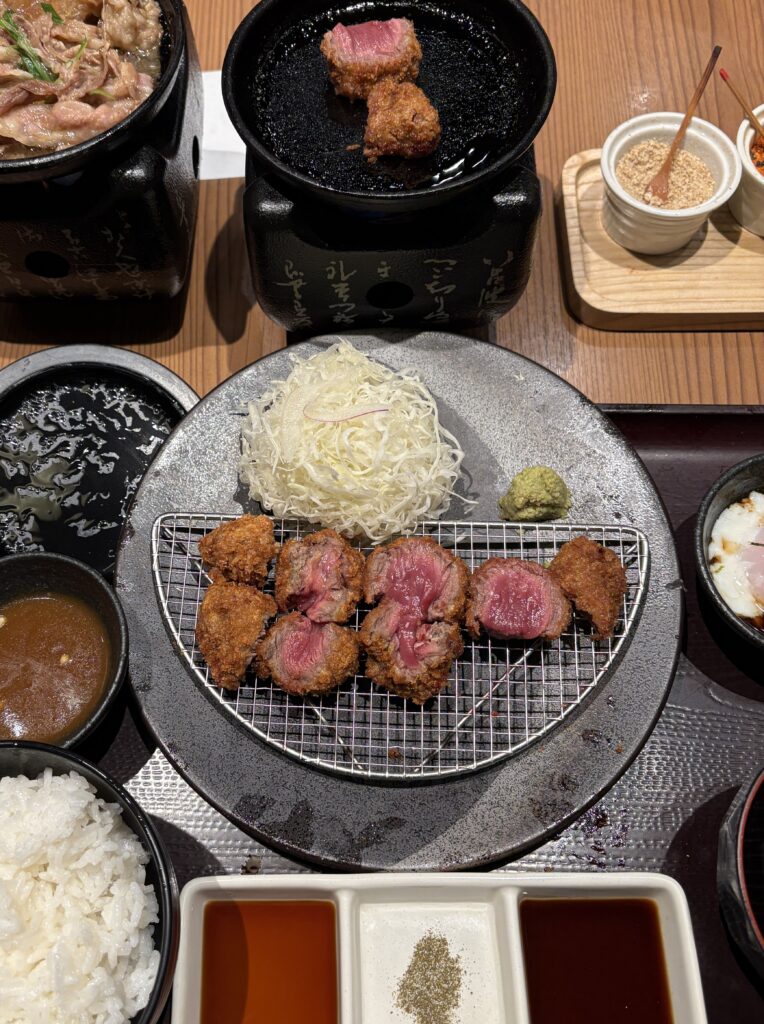
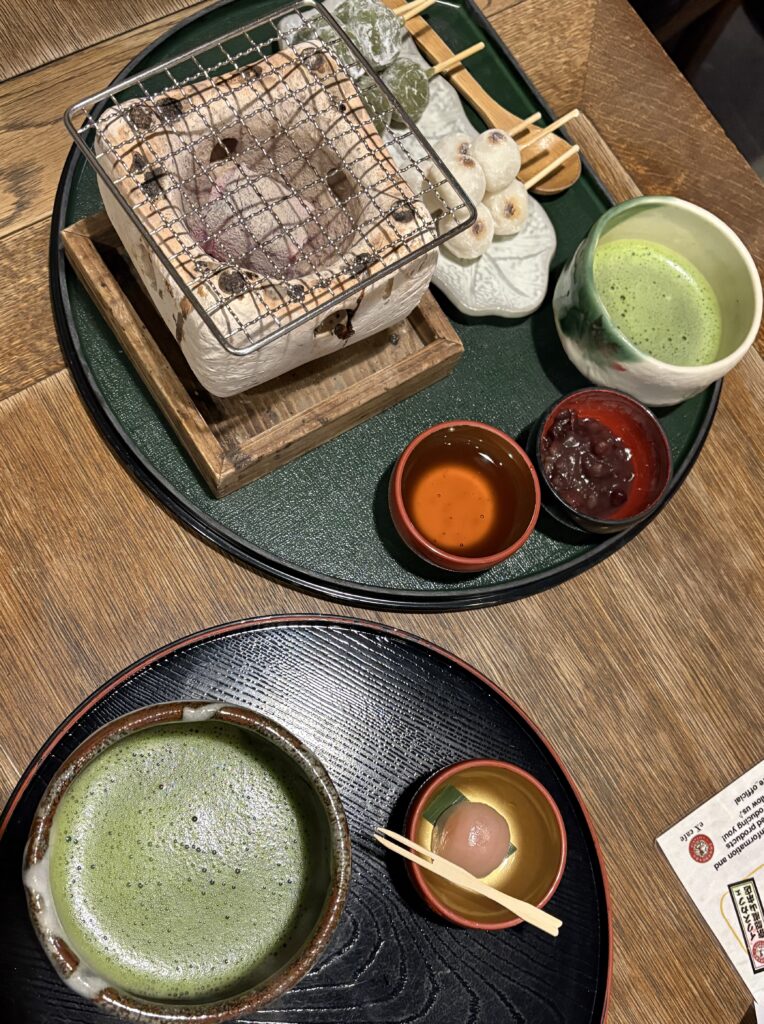
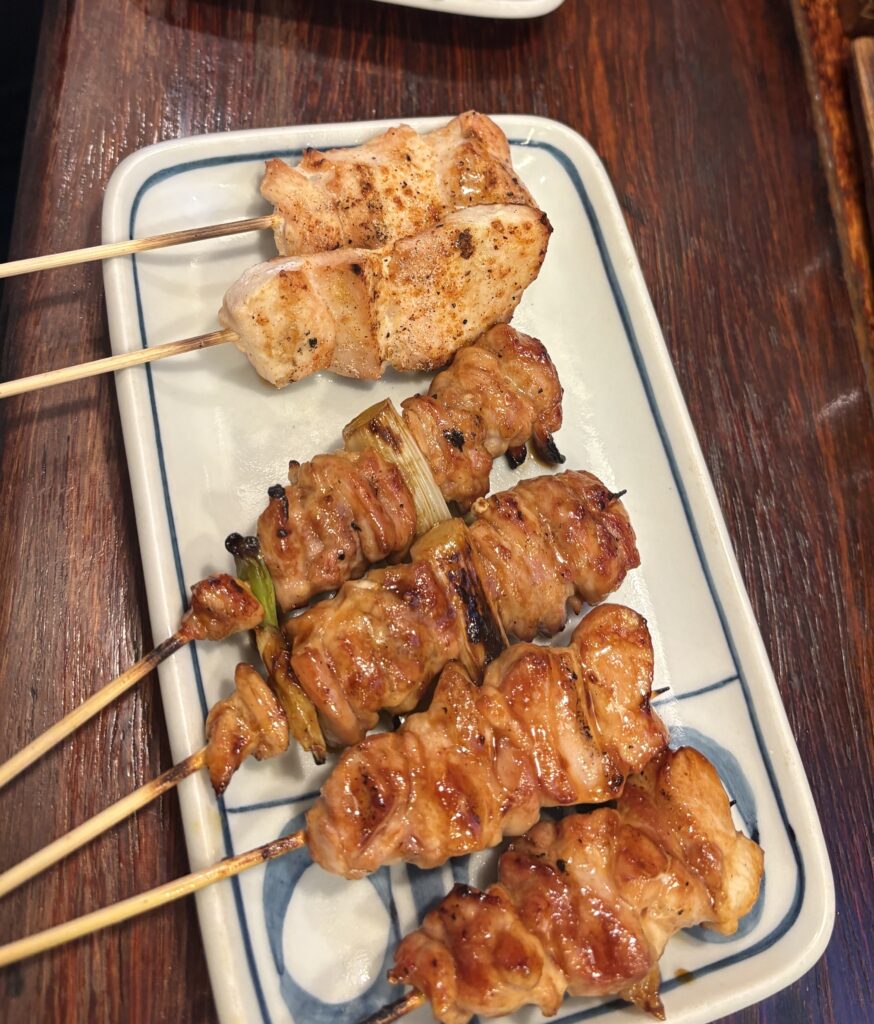
What to Buy in Kyoto: Must‑Have Crafts, Matcha & More
Kyoto is one of Japan’s best cities for souvenir shopping, not tacky fridge magnets, but high-quality, made-to-last goods.
You’ll find things here that are beautiful, useful, and totally unique to this region. And if you’re wondering, yes, I bought matcha. And a sake bottle. And almost a knife I didn’t need. Kyoto will do that to you.
Here are some of the best things to buy in Kyoto:
- Kyoto Knives – Shops like Aritsugu or Shigeharu offer handcrafted kitchen knives that are sharp enough to transform your cooking experience. You can even get your name engraved in kanji.
- Chopsticks – Not your average takeaway pair. Many shops sell elegant, lacquered, or carved chopsticks — some made with sandalwood or bamboo — often boxed as gift sets.
- Uji Matcha – Uji (just south of Kyoto) is Japan’s matcha capital. Pick up ceremonial-grade powder, matcha sweets, or even matcha salt for a unique treat. It’s light, easy to pack, and makes a great gift.
- Sake – Kyoto’s Fushimi area is one of Japan’s top sake-producing regions. Look for small-batch bottles or flavored variations that aren’t easily available outside the country.
- Crafted Goods (Kyo-yaki Pottery, Incense, Furoshiki Wraps) – Kyoto’s artisan culture runs deep. Whether it’s hand-dyed fabrics, traditional ceramics, or incense with centuries-old roots, you’ll find something worth packing.
- Pokémon Center Kyoto – A must for fans and families alike, this shop is packed with exclusive merch, plushies, and nostalgic goodies from the world of Pokémon.
- Nintendo Store Kyoto – From Mario to Zelda, this vibrant store offers fun collectibles and souvenirs for every gamer—perfect for reliving your childhood or shopping for the kids.
Pro tip: Nishiki Market and nearby Teramachi Street are great places to browse. Just be warned, it’s very easy to go from “I’m just looking” to “I need a second suitcase.” However, keep in mind that touristy prices are also prevalent.
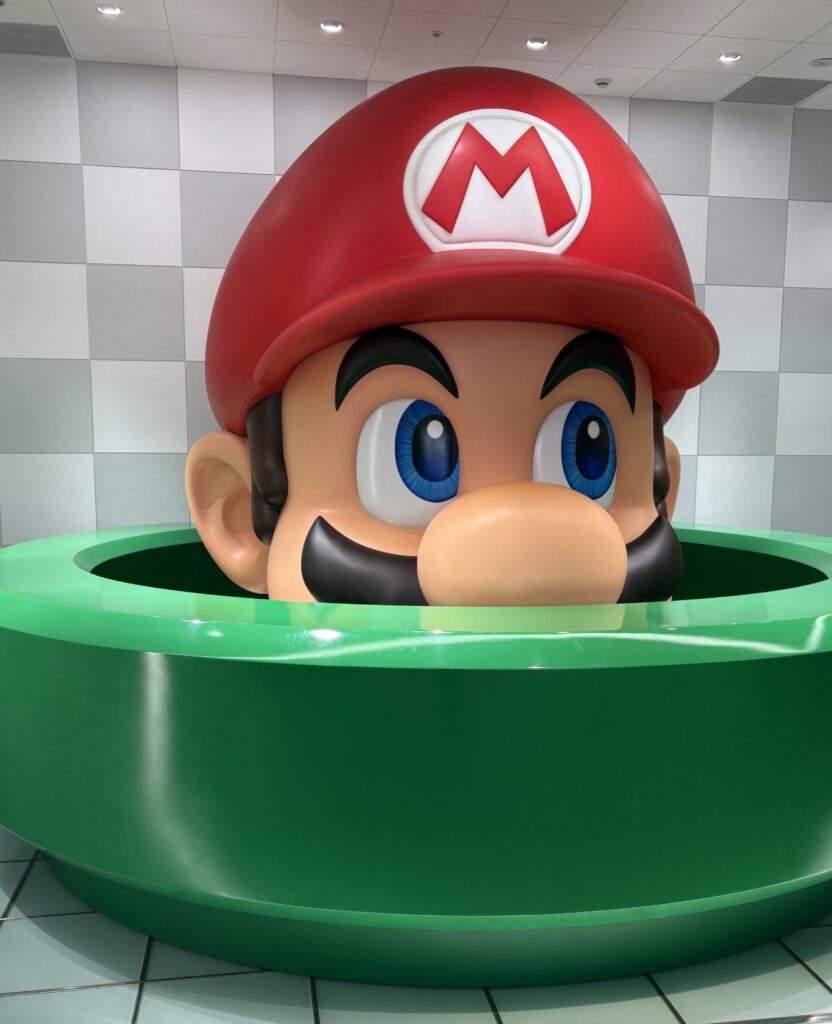

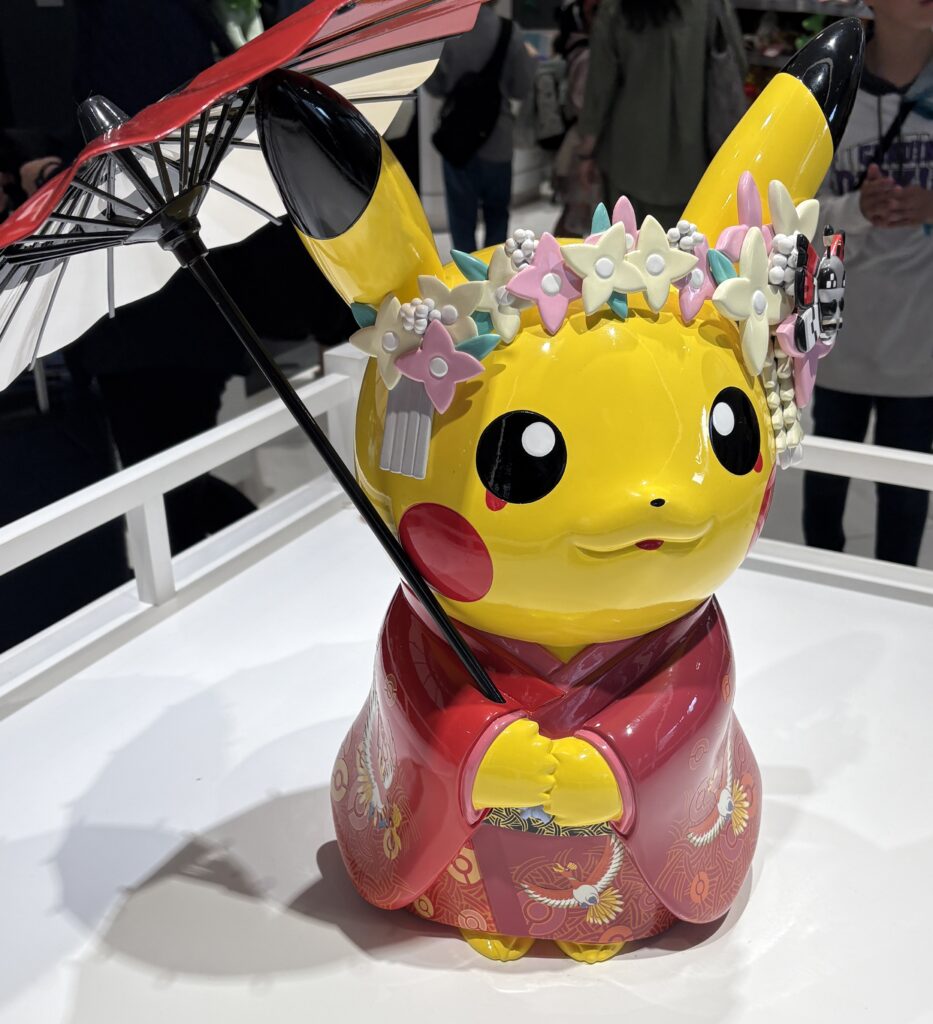
Best Time to Visit Kyoto
Kyoto experiences all four seasons in full color, with each one dramatically transforming the city’s temples, streets, and scenery.
From cherry blossoms to fall foliage, your visit can completely transform the feel of Kyoto.
If you want mild weather and visual magic, aim for spring or autumn. If you prefer smaller crowds (and don’t mind bundling up), winter might surprise you.
Spring: March to May
Spring is peak postcard season in Kyoto. Average temperatures hover between 10 to 22°C (50 to 72°F), and cherry blossoms usually bloom from late March to early April.
Maruyama Park, the Philosopher’s Path, and the Kamo River banks are popular hanami spots, but expect shoulder-to-shoulder crowds during bloom week. It’s stunning, but not exactly tranquil.
Still, this is Kyoto at its most alive. Shrines are active, and seasonal dishes fill restaurant menus; the city seems to glow in soft pinks and greens.
Summer: June to August
Summer in Kyoto is hot and humid, with temperatures between 24 and 34°C (75 to 93°F). It’s a sticky, sweaty experience, especially if you’re temple-hopping midday.
That said, this is the season of festivals. The Gion Matsuri in July is Kyoto’s most famous, with massive floats and street food taking over downtown. Nights are livelier, and the city has a different pulse once the sun dips.
Plan early mornings or late evenings for sightseeing, and factor in plenty of café and river breaks if you’re visiting in July or August.
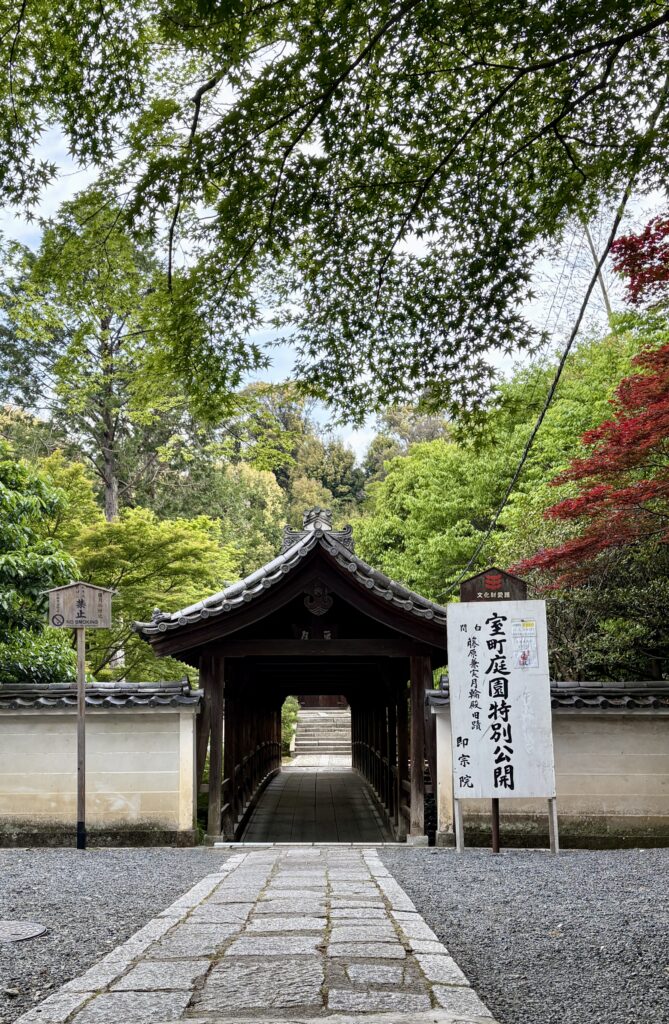
Autumn: October to Early December
Many say this is the best time to visit Kyoto, and they’re not wrong. Crisp air, golden afternoons, and fiery maple leaves draping temple rooftops give the city a cinematic feel.
Temperatures range from 10 to 20°C (50 to 68°F), and foliage peaks in mid to late November. Popular spots like Tofuku-ji and Eikando Temple light up at night, both literally and metaphorically.
It’s incredibly popular, though, so book accommodation and dinner spots early.
Winter: December to February
Don’t sleep on winter. While it rarely snows heavily, Kyoto’s cold months offer a quieter, more reflective version of the city.
Average temperatures hover between 1 and 10°C (34 to 50°F), and significant sights are often blissfully empty, especially in the mornings.
Some temples, like Kinkaku-ji, look surreal with a snow-dusted roof and blue sky backdrop.
If you don’t mind layering up, winter might be your best shot at experiencing Kyoto without elbow-to-elbow crowds. Plus, cafés and teahouses feel extra cozy this time of year.
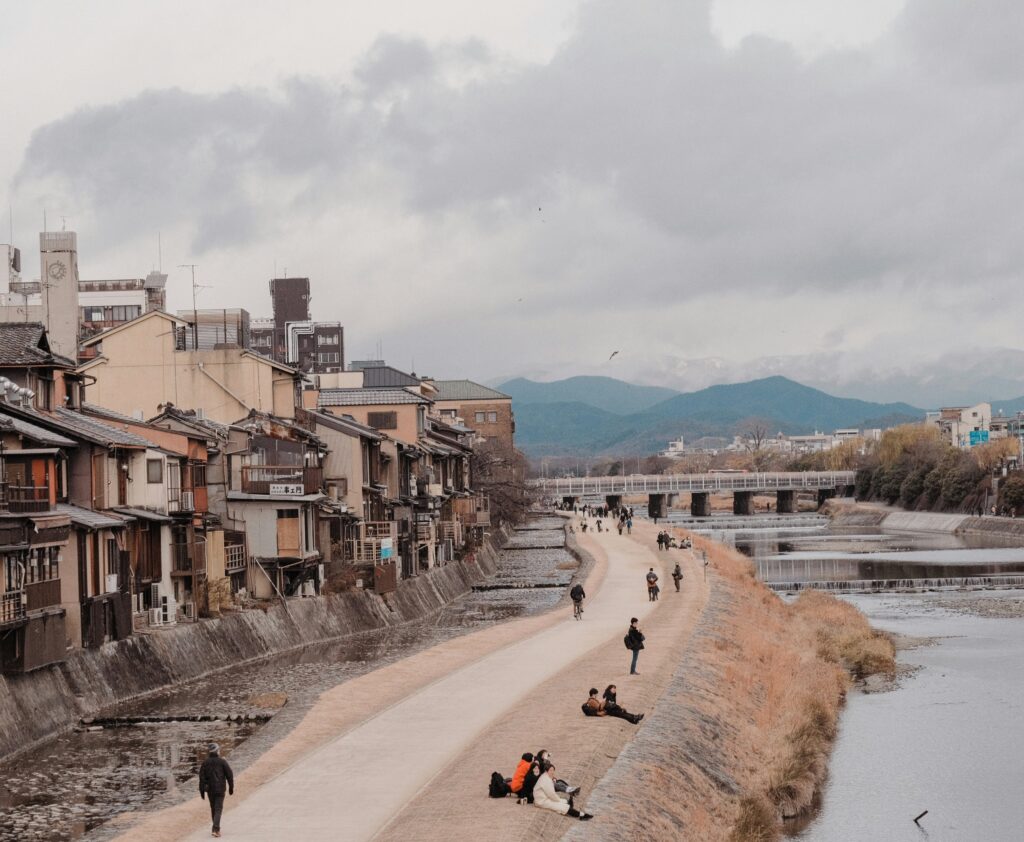
Helpful Kyoto Travel Tips for First‑Time Visitors
Kyoto can feel like a serene, spiritual haven or a bustling, crowded center of tourism. It’s also one of the more expensive stops on any Japan itinerary, especially if you’re staying in traditional ryokans or dining out often.
That said, understanding the overall cost of traveling in Japan puts things in perspective and helps you plan better, allowing you to enjoy Kyoto without overspending.
These tips come straight from trial, error, and a whole lot of walking. Trust me, knowing when to slow down and when to detour can completely reshape your trip.
- Pack walking shoes: This city is a walking paradise, but only if your feet are up for it. From temple paths to hilly streets and old staircases, comfort wins.
- Brush up on Japanese etiquette for tourists: Simple habits like lowering your voice in public, respecting “no photo” signs at temples, and returning trays at cafés will help you blend in and earn appreciation from locals.
- Stay near a major train or subway line: Even if your ryokan looks like a Pinterest board, make sure you’re within a 10-minute walk of a station. Getting around gets tiring fast.
- Don’t overpack your itinerary: Kyoto’s charm is in the quiet moments. If you’re racing to 12 temples a day, you’re missing the whole point.
- Bring cash — seriously: Kyoto’s still not fully card-friendly. Small eateries, shrines, and some tea shops are cash-only, so hit a 7-Eleven ATM and keep some yen handy.
- Shop outside the tourist core: Ninenzaka and Nishiki Market have their charm, but head into lesser-trafficked neighborhoods to buy your Kyoto goods, the prices drop, the crowds thin, and the experience feels more local.
- Stay outside the most tourist-saturated zones: Gion and Kawaramachi are beautiful, but they’re intense. Consider neighborhoods like Higashiyama, Northern Kyoto, or even Arashiyama for a more relaxed pace.
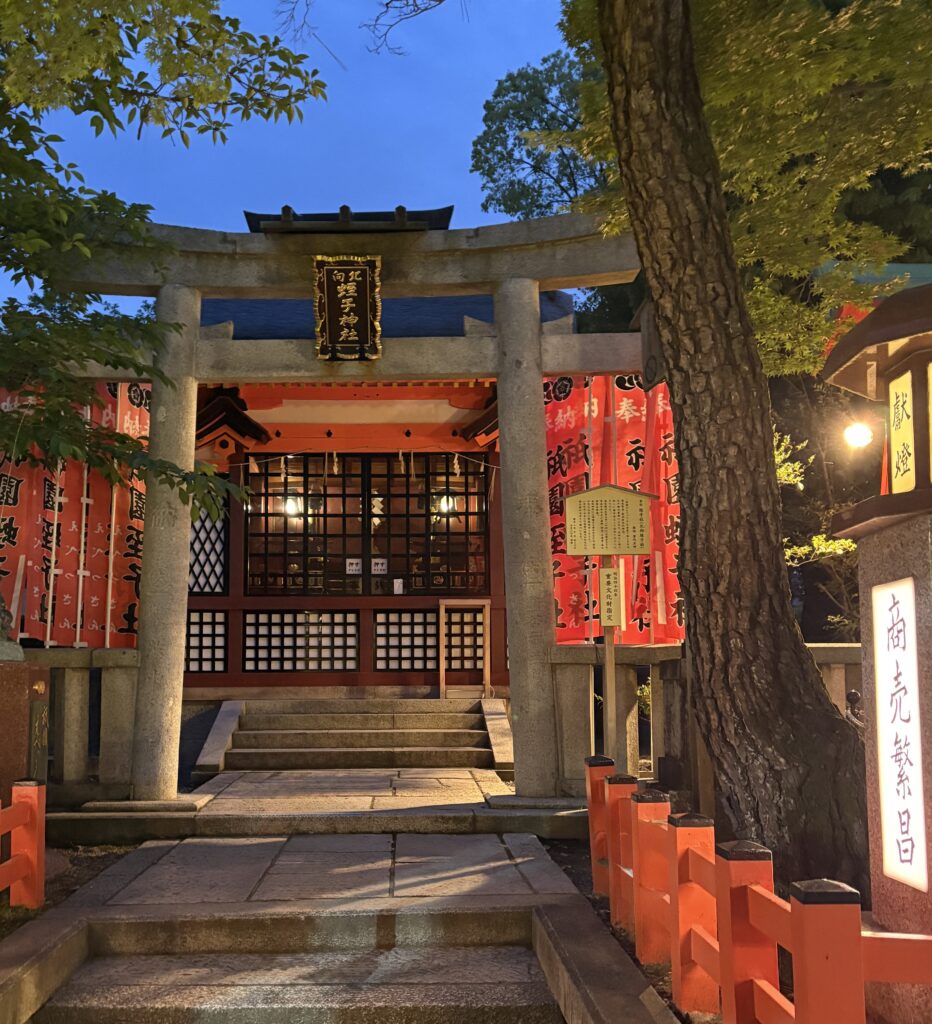
Is 3 Days in Kyoto Enough? Final Thoughts
Three days is a great start, but if you love culture, slow walks, and anything even remotely traditional, Kyoto will leave you wanting more.
Compared to Tokyo or Osaka, Kyoto feels the most deliberately curated for tourists, and I don’t mean that in a bad way. It’s just polished.
It’s proud of its past. And yes, it’s more touristy than Tokyo in some parts. However, that doesn’t detract from its captivating quality.
It all depends on how you experience the city. Rush through temples in peak afternoon sun with a dozen busloads of tourists? Not great. But wake up early, stay in a quieter neighborhood, and lean into the slow pace? Kyoto will charm you.
Three days lets you hit the icons—Fushimi Inari, Kiyomizu-dera, and Arashiyama—but also gives you room for matcha in Uji, quiet moments in mossy gardens, and maybe even a few handmade chopsticks to take home.
If you plan smartly and don’t try to cram in everything, it’s more than enough. But if you walk away wanting a fourth day? That’s kind of the point.
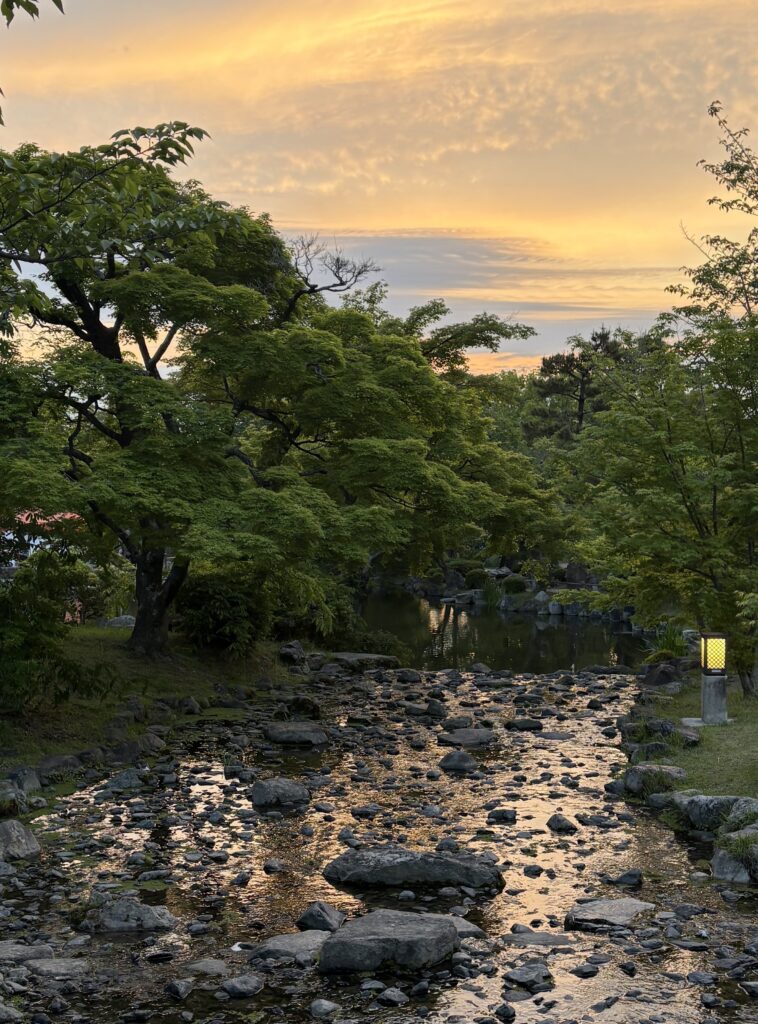
Can you do Kyoto in 3 days?
Yes , and if you plan right, three days is enough to cover major highlights like Fushimi Inari, Arashiyama, Gion, and Kiyomizu-dera without burnout.
Just don’t try to visit every temple. Kyoto rewards those who take their time.
What is the best way to get around Kyoto as a tourist?
Kyoto’s buses and subways are reliable, but walking and biking give you the best feel for the city. For longer hops, use an IC card (like ICOCA or Suica) to easily transfer between buses, JR trains, and the subway.
How far is Kyoto from Osaka or Tokyo?
Kyoto is around 30 minutes from Osaka by train, and about 2–3 hours from Tokyo on the Shinkansen. That makes it easy to add to any Japan itinerary, especially if you base yourself centrally.
Where should I stay in Kyoto for a first trip?
Stay in or near Gion, Kawaramachi, or Higashiyama for the best mix of temples, food, and transit access. Arashiyama and Northern Kyoto are better if you want fewer crowds and quieter mornings.

